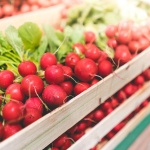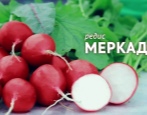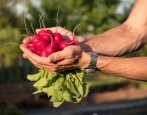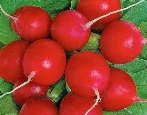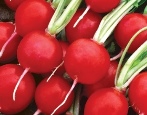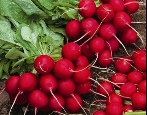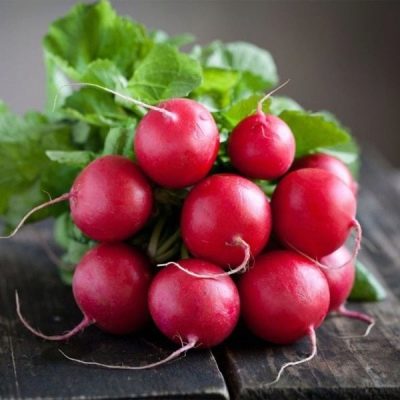
- Year of approval: 2001
- Ripening terms: early maturing
- Leaf rosette shape: upright
- Leaves: medium size, broadly ovoid, grayish green, medium pubescence
- The form: rounded
- Coloration: Red
- Weight, g: 14-15
- Color of the pulp: opaque, white
- Pulp (consistency): juicy, dense
- Taste qualities: good ones
Despite the variety of varieties offered for planting, there is a radish that is very popular among gardeners and farmers, such as Sora. Such popularity is due to the unpretentiousness of agricultural technology and the ability to adapt to almost any climatic conditions. It is not difficult to grow a vegetable if you study the peculiarities and subtleties of the culture.
Breeding history
Sora radish was bred thanks to the efforts of the Dutch breeders of the agricultural company Nunhems B. V. in 2000. A year later (in 2001), the vegetable crop was enrolled in the State Register of Admitted to Use. The vegetable is cultivated in different climatic zones. You can grow radishes both on garden ridges and on farmlands. In addition, the crop is productive both in the open field and in the protected.
Description of the variety
Sora is a plant with a powerful and erect rosette, consisting of medium-sized grayish-green leaves - about 20-22 cm. The rosette is characterized by compactness and neatness. In addition, the foliage has a non-standard shape - ovate or broadly ovate, and moderate pubescence. It should also be noted that the variety has high resistance to shooting.
Characteristics of the appearance of the plant and root crops
Sora is a medium-sized variety. Root crops of the same shape and size ripen. The average weight of the fruit is 15, and sometimes 20-25 grams. The diameter of the radish is 4-5 cm. The shape of the vegetable is round, and the head is convex, of medium size. Ripe radish has a uniform color of red or bright scarlet. The skin of the root vegetable is thin, not at all tough, smooth, without obvious flaws and irregularities.
The plucked radish easily transfers transportation over not very long distances. In addition, the variety has excellent keeping quality - 7-10 days without loss of taste and marketability.
Purpose and taste of tubers
Radish is famous for its excellent taste, for which even children love it. The snow-white, non-translucent pulp of the vegetable is characterized by a delicate, dense and juicy texture without voids. The root vegetable has a harmonious taste - sweetish, slightly crunchy, without pungency, which is inherent in most of the vegetable's relatives. The peel of the tubers is also completely non-bitter.
Plucked root vegetables are added to salads, eaten fresh, used as a decoration for cold dishes. In addition, the variety is grown to obtain beam products.
Maturation
Sora belongs to the early maturing. From the moment of full germination of sprouts to ripening of full-fledged tubers, only 23-25 days pass. If you want the ripened vegetables to be larger, you can leave the radishes in the ground for up to 30-35 days. The yield of the crop is friendly. As a rule, the crop is harvested for 10-15 days, pulling out roots every 5 days.
Yield
The variety always pleases with an excellent harvest. On average, up to 7.9 kg of juicy radish can be harvested from 1 m2 of plantings. If planting is carried out several times during the season, then the yield indicator will increase significantly.
Growing and care
Radish is cultivated through direct sowing of seeds. When planting in open ground, it is necessary to prepare in advance a site in which elongated grooves with a depth of 1-1.5 cm are made, where radish seeds are immersed. The distance between the rows is 15-20 cm. Planting is carried out according to the scheme 5-7x15-20 cm. It is possible to grow radishes on the site where any crops, except cabbage, previously grew. The best period for cultivation on garden ridges is considered the end of April - beginning of May.
The agricultural technology of the vegetable is based on standard procedures: watering several times a week, applying top dressing, loosening row spacings and removing weeds, thinning plantings, preventing viruses and pest infestations.
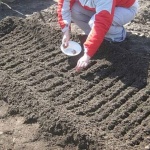

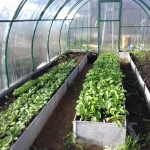
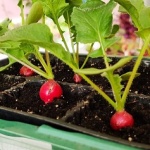
Soil requirements
Radish is quite picky about the structure and quality of the soil. Sora prefers fluffy, breathable, moisture-permeable, fertile and non-acidic soils. Nutritious sandy loam substrates are considered the most suitable.
Required climatic conditions
The vegetable has good stress resistance, which provides resistance to temperature extremes, short shade, short drought. For planting, you should choose a place well lit by the sun, light, where it is warm, there is no dampness, stagnant moisture.
Disease and pest resistance
Vegetable crops are endowed with moderate immunity, which provides resistance to a number of diseases and viruses. Radish is resistant to powdery mildew and lacrimal bacteriosis. If the rules of agricultural technology are violated or in adverse weather conditions, the vegetable crop can be attacked by cruciferous flea beetles, sprinkling the beds with a mixture of tobacco dust and wood ash will help to get rid of them.

